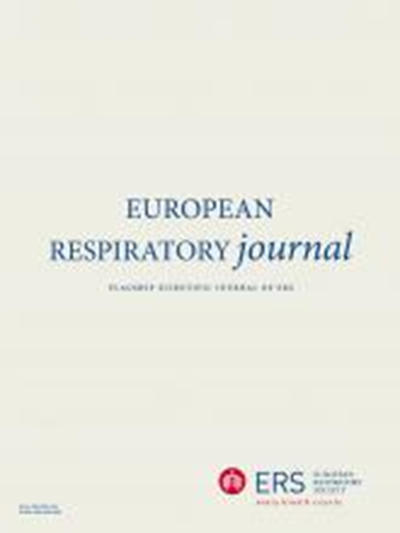Butyrate-producing gut bacterium Faecalibacterium prausnitzii protects against bacterial pneumonia.
IF 21
1区 医学
Q1 RESPIRATORY SYSTEM
引用次数: 0
Abstract
BACKGROUND Gut microbiota play a protective role against pneumonia in mice, probably by producing the immunomodulatory short-chain fatty acid butyrate. Yet, butyrate has limited potential for clinical use due to its challenging handling in practice. We performed mouse experiments and translational analyses to determine whether butyrate-producing gut commensals, Faecalibacterium prausnitzii and Anaerobutyricum soehngenii, could provide protection against bacterial pneumonia and serve as next-generation probiotic. METHODS We pretreated C57BL/6J mice with butyrate, F. prausnitzii or A. soehngenii, and subsequently infected them intranasally with Klebsiella pneumoniae. To assess the relevance in humans, we assessed associations between rectal levels of Faecalibacterium, immune responses, and clinical outcomes in 115 patients with community-acquired pneumonia (CAP), and in a separate validation cohort. RESULTS Pretreatment with F. prausnitzii, but not A. soehngenii, protected mice against bacterial pneumonia, as reflected by reduced bacterial growth and dissemination, lessened organ damage and dampened inflammation. Similar to butyrate pretreatment, F. prausnitzii resulted in reduced pulmonary IL-6 and CXCL-1. In humans, gut Faecalibacterium was decreased during CAP compared to matched controls. CAP patients with higher gut Faecalibacterium levels had lower IL-6-producing capacity and downregulated inflammatory gene expression. Higher intestinal Faecalibacterium levels were associated with better clinical outcomes in independent cohorts of CAP and critically ill patients, which remained significant when controlled for potential confounders. CONCLUSION This is the first study showing that the gut commensal Faecalibacterium prausnitzii provides protection against bacterial pneumonia and has translational potential. This motivates future studies investigating the clinical potential of F. prausnitzii as novel probiotic for pneumonia.产生丁酸的肠道细菌prausnitzii Faecalibacterium可以预防细菌性肺炎。
肠道菌群可能通过产生免疫调节短链脂肪酸丁酸酯而对小鼠肺炎起保护作用。然而,由于其在实践中具有挑战性的处理,丁酸盐具有有限的临床应用潜力。我们进行了小鼠实验和转化分析,以确定产生丁酸盐的肠道共生菌,prausnitzii Faecalibacterium prausnitzii和soehngenii厌氧丁酸菌是否可以提供对细菌性肺炎的保护,并作为下一代益生菌。方法分别用丁酸盐、prausnitzf或soehngeni对C57BL/6J小鼠进行预处理,然后经鼻感染肺炎克雷伯菌。为了评估其在人类中的相关性,我们评估了115例社区获得性肺炎(CAP)患者直肠Faecalibacterium水平、免疫反应和临床结果之间的关系,并在一个单独的验证队列中进行了评估。结果用prausnitzi而非soehngeni治疗小鼠对细菌性肺炎有保护作用,表现为减少细菌的生长和传播,减轻器官损伤和抑制炎症。与丁酸盐预处理类似,F. prausnitzii可降低肺IL-6和CXCL-1。在人类中,与对照组相比,CAP期间肠道Faecalibacterium减少。肠道Faecalibacterium水平较高的CAP患者产生il -6的能力较低,炎症基因表达下调。在CAP和危重患者的独立队列中,较高的肠道Faecalibacterium水平与更好的临床结果相关,在控制潜在混杂因素后,这一点仍然显著。结论该研究首次表明,肠道共生prausnitzii粪杆菌对细菌性肺炎具有保护作用,并具有转化潜力。这激发了未来的研究,调查F. prausnitzii作为新型益生菌治疗肺炎的临床潜力。
本文章由计算机程序翻译,如有差异,请以英文原文为准。
求助全文
约1分钟内获得全文
求助全文
来源期刊

European Respiratory Journal
医学-呼吸系统
CiteScore
27.50
自引率
3.30%
发文量
345
审稿时长
2-4 weeks
期刊介绍:
The European Respiratory Journal (ERJ) is the flagship journal of the European Respiratory Society. It has a current impact factor of 24.9. The journal covers various aspects of adult and paediatric respiratory medicine, including cell biology, epidemiology, immunology, oncology, pathophysiology, imaging, occupational medicine, intensive care, sleep medicine, and thoracic surgery. In addition to original research material, the ERJ publishes editorial commentaries, reviews, short research letters, and correspondence to the editor. The articles are published continuously and collected into 12 monthly issues in two volumes per year.
 求助内容:
求助内容: 应助结果提醒方式:
应助结果提醒方式:


